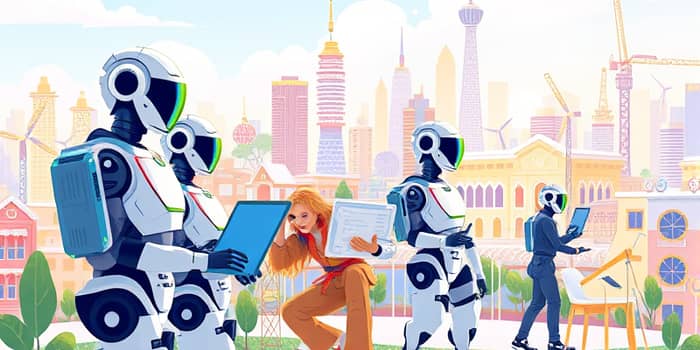
The global labor market is undergoing a radical transformation driven by technological breakthroughs, demographic shifts, and evolving business models. Organizations and individuals alike must adapt to stay relevant in an environment defined by rapid change. This article explores the key forces shaping the jobs of the future and offers actionable insights for professionals, policy makers, and educators.
Automation and artificial intelligence are projected to displace about 92 million jobs by 2030, while simultaneously creating around 170 million new positions. This represents a net gain of seventy-eight million jobs on a global scale, but the transition will be uneven across sectors and income levels.
Lower-wage workers will be up to 14 times more likely to need occupational changes than those in higher-wage roles. This disparity highlights the urgency of targeted support programs and educational initiatives to help vulnerable populations adapt.
Certain fields will experience accelerated expansion as the economy evolves. Professionals aiming to secure stable, high-growth careers should consider aligning their skills with these sectors.
As automation streamlines routine tasks, demand will shrink in certain areas. Recognizing these trends early can help individuals pivot to more promising opportunities.
The workforce is also affected by generational and geographic factors. Youth unemployment remains a pressing concern, with the rate for Gen Z at 13%—well above the global average. At the same time, employers are placing greater emphasis on skills and practical experience over formal degrees, signaling a shift toward experience and skills outweigh degrees in hiring decisions.
Diverse talent pools, including remote and gig workers, are becoming more integrated into traditional organizational structures, driving the need for inclusive policies and flexible engagement models.
Addressing growing skill gaps is critical to ensuring that displaced workers can transition into emerging roles. Organizations, governments, and educational institutions must collaborate on scalable training solutions.
Public-private partnerships and online learning platforms will play a pivotal role in delivering affordable, accessible reskilling programs that can be tailored to local labor market needs.
Traditional office structures are giving way to more flexible arrangements. Remote work, hybrid models, and even four-day workweeks are being tested for their impact on productivity and employee satisfaction. Companies that embrace flexibility, remote work, and hybrid models are likely to attract top talent and reduce overhead costs.
Meanwhile, employee mental health and well-being have emerged as strategic priorities. Organizations investing in holistic wellness programs and supportive policies will benefit from higher engagement and lower turnover rates.
Government initiatives and major infrastructure projects are reshaping career landscapes. The transition to net-zero emissions may displace some traditional energy jobs but will also generate opportunities in renewables, electric vehicle manufacturing, and carbon capture technologies.
Legislation such as the CHIPS and Science Act is steering investments into semiconductor manufacturing and STEM education, creating a surge in high-tech employment. Infrastructure spending on transportation and urban development will further drive demand for construction and engineering professionals.
Modern organizations are placing people at the heart of their productivity strategies. Concepts like adaptive work design, empathetic leadership, and employee autonomy are becoming critical. Building a digital-first culture for business success involves equipping teams with the right tools and fostering a mindset of continuous innovation.
Trust and equity are equally vital. Inclusive policies, transparent communication, and fair performance evaluation systems contribute to a workplace environment where individuals feel valued and empowered. Companies that prioritize focus on employee mental well-being will not only enhance morale but also drive sustained performance improvements.
The convergence of automation, sustainability, and demographic change presents both challenges and opportunities. Stakeholders must adopt a proactive stance, leveraging data-driven insights and human-centric strategies to shape a resilient, future-ready workforce.
By embracing lifelong learning, fostering inclusive cultures, and investing in emerging technologies, organizations and individuals can navigate the complexities of tomorrow’s economy. The journey ahead demands adaptability, collaboration, and an unwavering commitment to shared prosperity.
References













